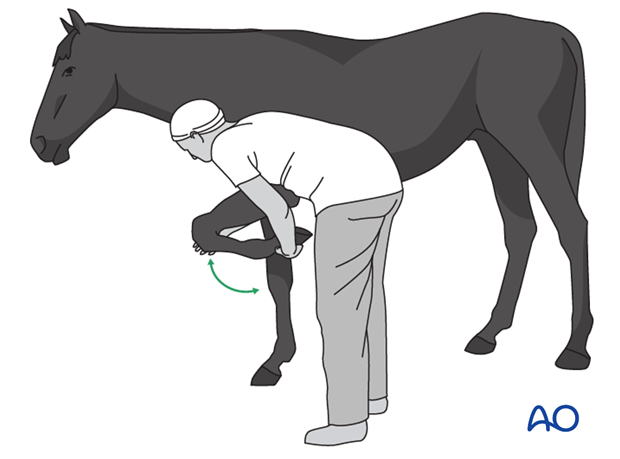Plate fixation
1. Principles
Anatomic reduction and application of a locking plate to the cranial aspect of the scapula. Either a short transverse plate across the neck (left) or a human distal femur plate along the cranial aspect of the scapular spine (right) are good choices.

The benefits of plate application are:
- The locking head plate screws are oriented at a right angle relative to the tensional forces exerted by the biceps muscle.
- The locking technology prevents micro movements of the screw head in the combi hole.
Cross-section of the scapula showing the position of the human distal femoral plate along scapular spine.
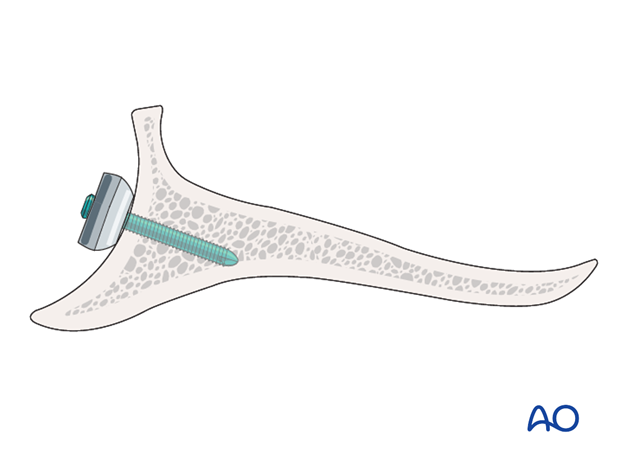
Read more about patient prognosis, possible complications, and implant removal.
2. Preparation and approach
This procedure is performed with the patient placed in lateral recumbency through the long craniolateral approach.
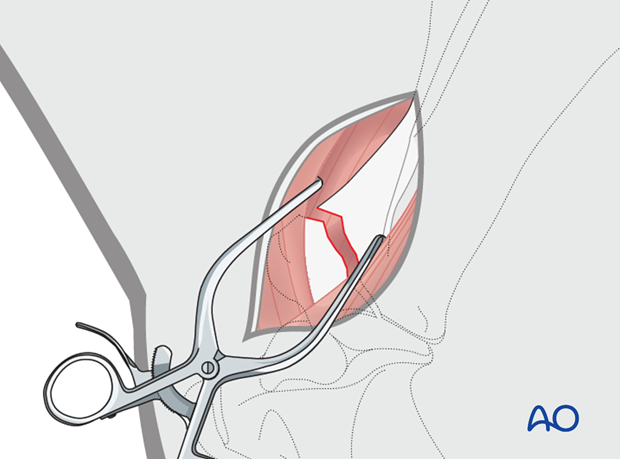
3. Reduction
The biceps tendon is left intact. The entire forelimb is pulled forward and the fracture is reduced by application of the large pointed reduction forceps across the fracture.
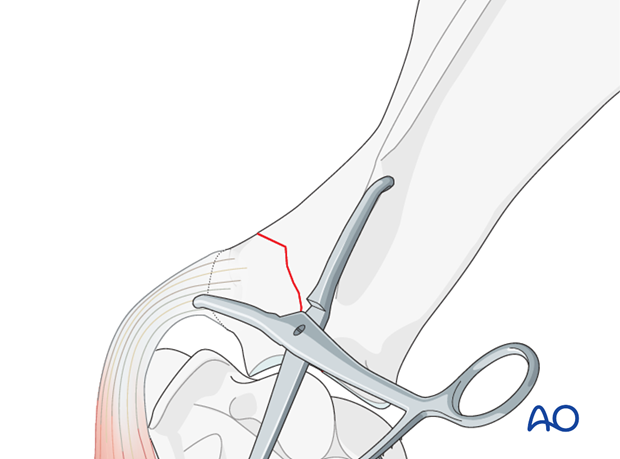
4. Fixation
4-hole narrow LCP
The 4-hole narrow LCP is contoured to the scapular neck.
Note: If the fragment is relatively small, it is advantageous to have the stacked combi hole positioned at the cranial aspect of the fragment. This allows two screws to be inserted into the fragment.
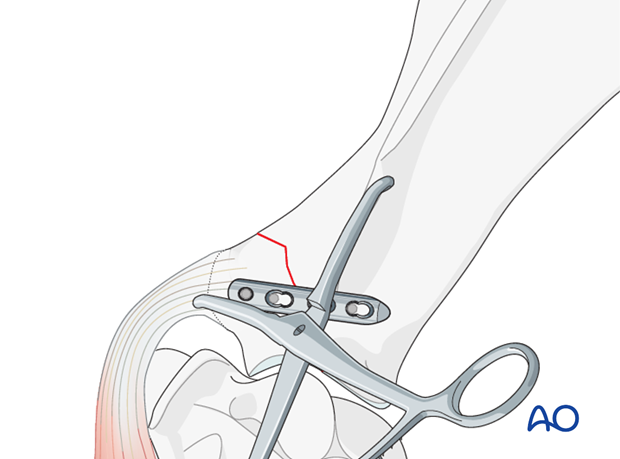
The plate is pressed onto the bone surface by means of two push-pull devices through the outside holes of the plate.
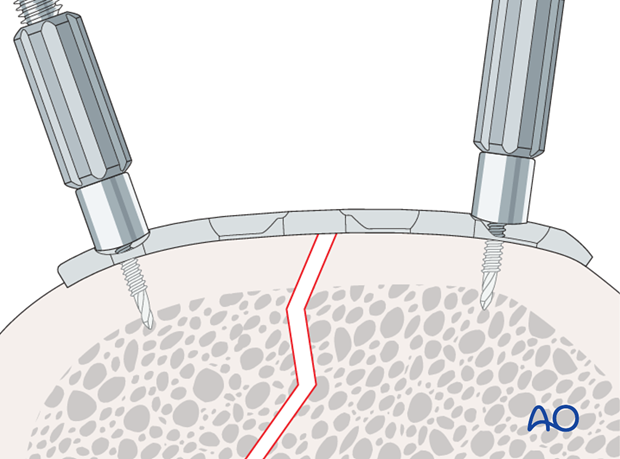
A locking head screw is inserted through one of the fracture-near plate holes through the fragment.
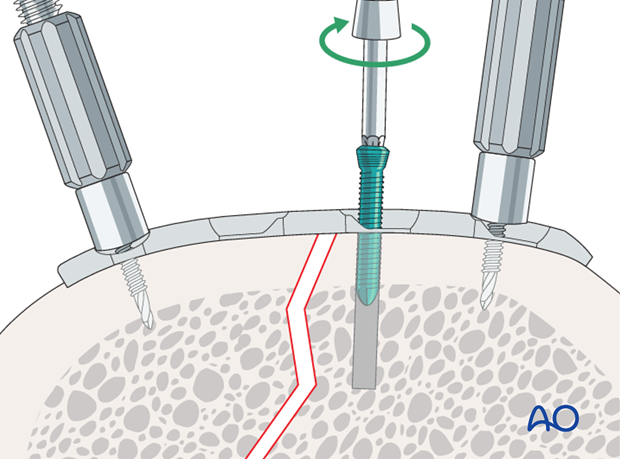
If additional compression is needed, a cortex screw can be inserted in load position through the fracture-near plate hole on the opposite side of the fracture line. In this case the push-pull device has to be removed after drilling the hole; otherwise no interfragmentary compression can be achieved.
If no additional compression is needed, a locking head screw is inserted.
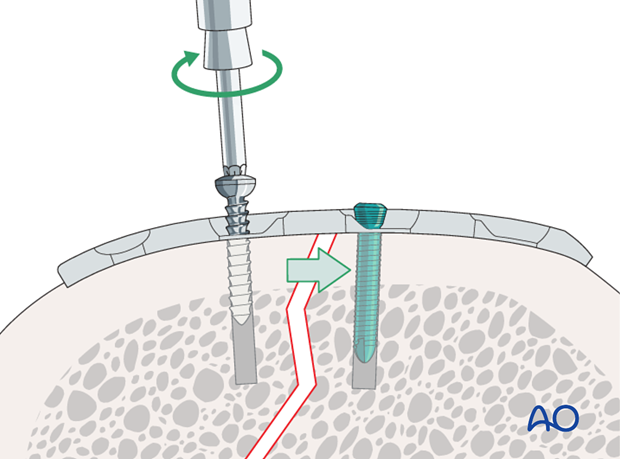
The remaining locking head screws are subsequently inserted and all screws tightened.
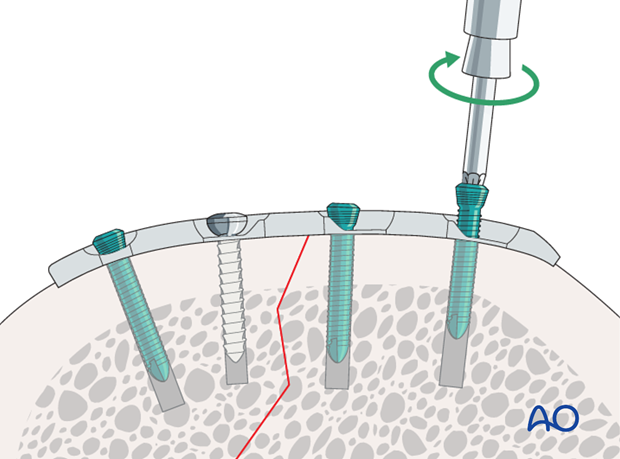
Preoperative image of a supraglenoid tubercle fracture.
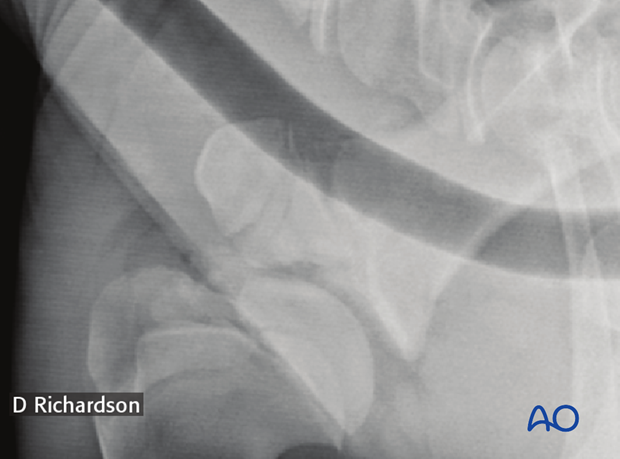
The addition of a figure-of-eight tension band as described for the lag screw fixation complements the plate fixation.
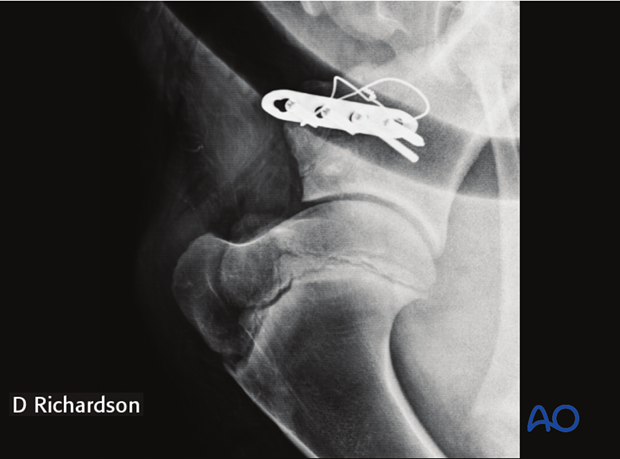
Alternative technique: Fixation with human distal femur plate
The human distal femur plate represents an option for fixation of these fractures. The benefit is that multiple locking head screws can be inserted into the fragment.
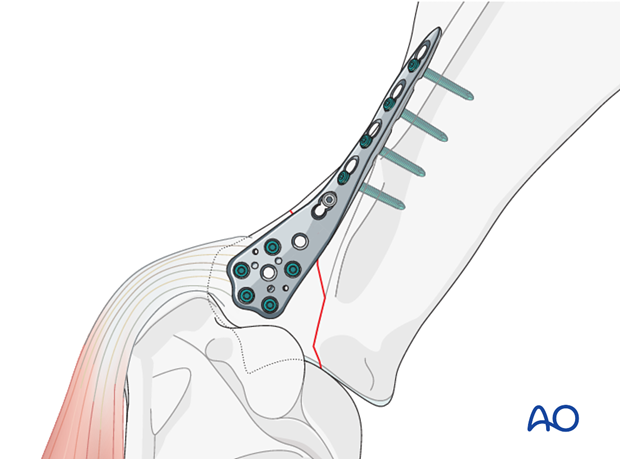
Top (left) and bottom (right) surface of a stainless steel distal femur plate. Seven locking head screws can be inserted into the plate head and in the plate shown 5 cortex or locking head screws can be used in the shaft, or a combination thereof.
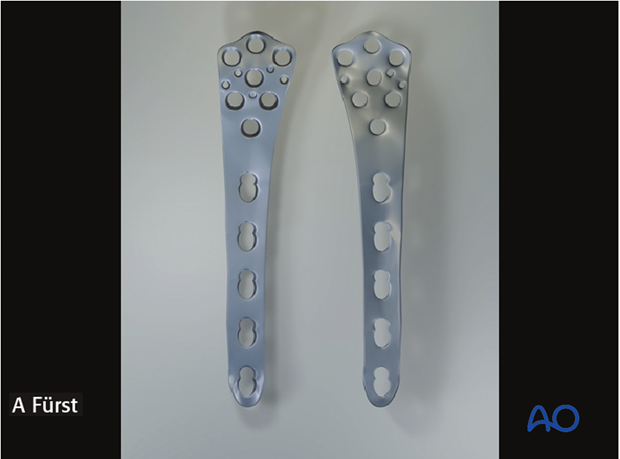
As many locking head screws as possible are inserted across the holes in the plate head.
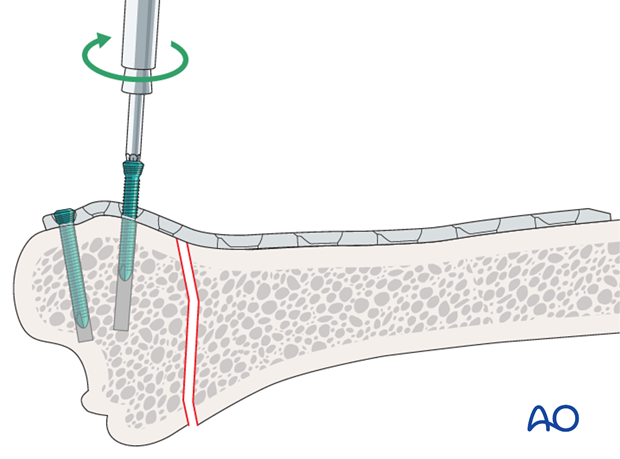
A cortex screw is inserted in the load fashion through the closest plate hole to the fracture and solidly tightened.
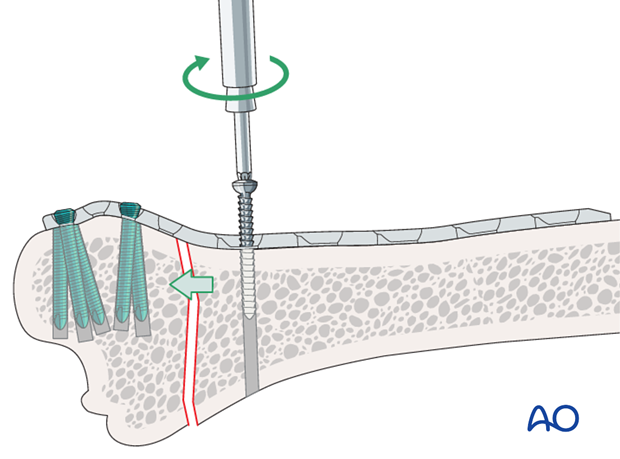
The remaining locking head screws are implanted in the shaft combi holes and tightened.
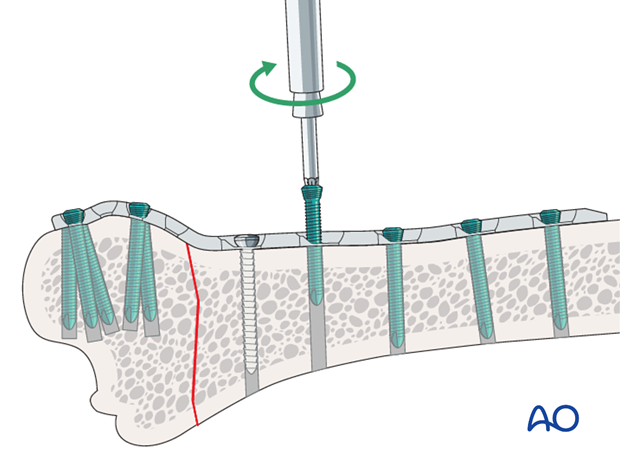
Left: Intraoperative picture showing the location of the plate with a drill guide fixed to a combi hole.
Right: All locking head screws are inserted across the holes in the plate head.
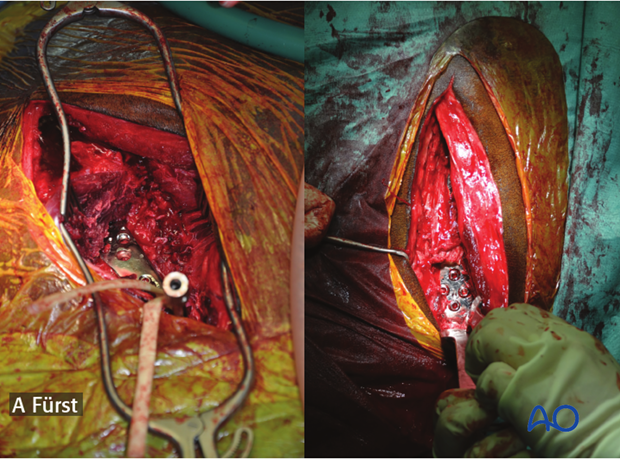
Two different immediate postoperative radiographic views of a repaired fracture.
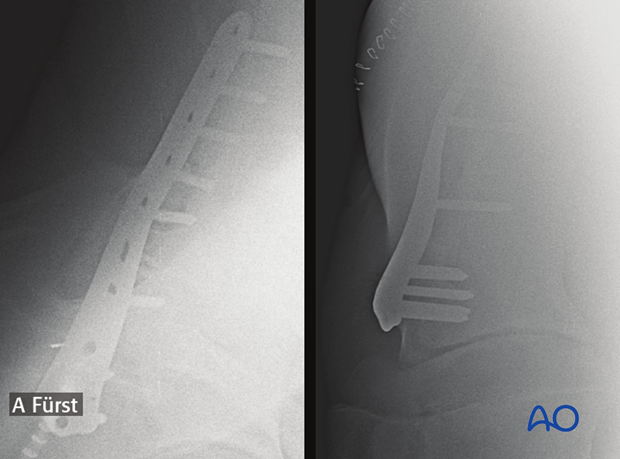
5. Closure
The soft tissues are closed in several layers. A simple continuous suture is placed in subcutaneous tissues, followed simple interrupted sutures in the skin covered by a stent bandage.
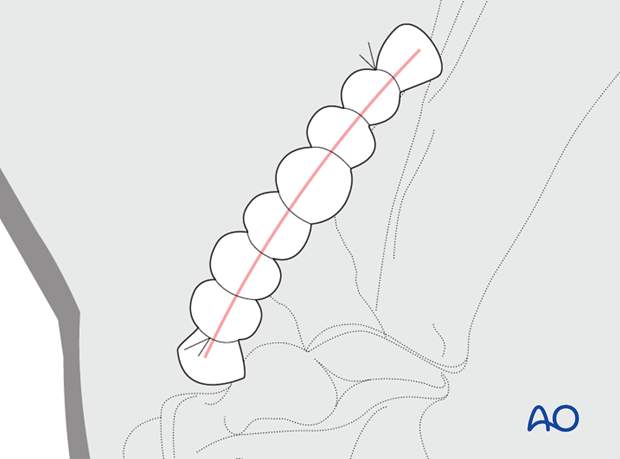
6. Aftercare
Horses are restricted to stall rest for 60 days to allow time for the dead space to fill with fibrous tissue and the biceps tendon to reattach. A carefully controlled rehabilitation program is important for these horses to regain strength and coordination in their shoulder joints.
Percutaneous stimulation of the shoulder muscles during rehabilitation to minimize muscle atrophy should be considered.
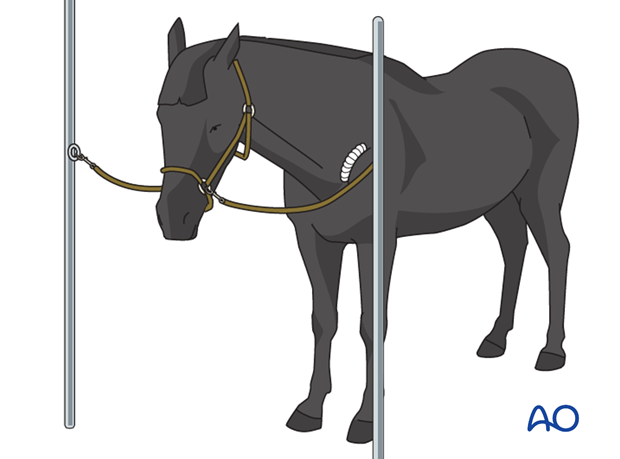
Typically, physical therapy begins with range-of-motion exercises and hand-walking for 5 minutes per day, followed by walking over ground poles and gradual increases in duration of exercise each day. Horses are not usually ready to return to training or to be turned out into a paddock for 6 to 12 months after surgery.
